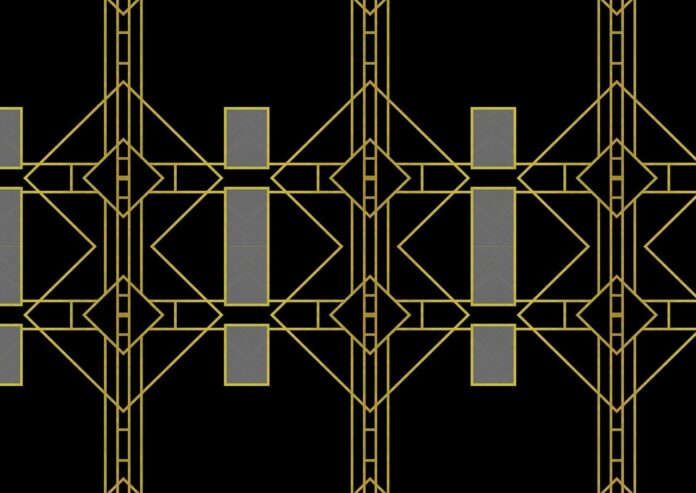Art Deco design is a style that originated in the 1920s and 1930s, but its influence can still be seen in modern-day architecture, interior design, and fashion. Known for its bold geometric shapes, lavish ornamentation, and luxurious materials, Art Deco has a timeless elegance that continues to captivate and inspire designers and enthusiasts around the world.
The origins of Art Deco can be traced back to the 1925 Exposition Internationale des Arts Décoratifs et Industriels Modernes in Paris, where the style made its international debut. It was a reaction against the ornate and elaborate Art Nouveau movement that preceded it, embracing modern technology and celebrating the machine age. The streamlined forms and sleek surfaces of Art Deco reflected the industrial progress and optimism of the era.
One of the most iconic features of Art Deco design is its use of geometric shapes and patterns. Symmetrical lines, zigzags, and chevron motifs are often seen in Art Deco architecture, furniture, and decorative arts. These bold and striking patterns create a sense of dynamism and energy, adding a sense of movement to the design.
Art Deco also emphasizes the use of luxurious materials, such as marble, lacquer, exotic woods, and precious metals. These opulent materials are often paired with rich, vibrant colors, such as deep blues, emerald greens, and striking reds, to create a sense of luxury and sophistication. The combination of sumptuous materials and vibrant colors gives Art Deco design a sense of glamour and decadence.
In addition to its distinctive visual aesthetic, Art Deco design also embraces a sense of modernity and progress. The style often incorporates streamlined forms and futuristic motifs, such as sunbursts, skyscrapers, and stepped setbacks, which symbolize the optimism and excitement of the early 20th century. This forward-looking approach made Art Deco design a perfect match for the sleek and elegant designs of the Art Deco era.
Despite its origins in the early 20th century, Art Deco design continues to be a source of inspiration and influence for contemporary designers. Its timeless elegance and striking visual appeal make it a popular choice for those seeking to add a touch of glamour and sophistication to their spaces. From the sleek lines of Art Deco skyscrapers to the bold geometric patterns of Art Deco furniture, this iconic style continues to captivate and enchant audiences around the world.
In conclusion, the timeless elegance of Art Deco design continues to captivate and inspire designers and enthusiasts around the world. Its bold geometric shapes, lavish ornamentation, and luxurious materials create a sense of glamour and sophistication that transcends time, making it a perennial favorite in the world of design. Whether it’s the sleek lines of Art Deco architecture or the sumptuous materials of Art Deco interiors, this iconic style remains a timeless and enduring source of inspiration for artists and designers today.




![Giant Lantern Festival 2023 | Philippines’ Biggest Christmas Festival In San Fernando, Pampanga [4K]](https://artventuremagazine.com/main/wp-content/uploads/2025/02/1739501688_hqdefault-324x160.jpg)


